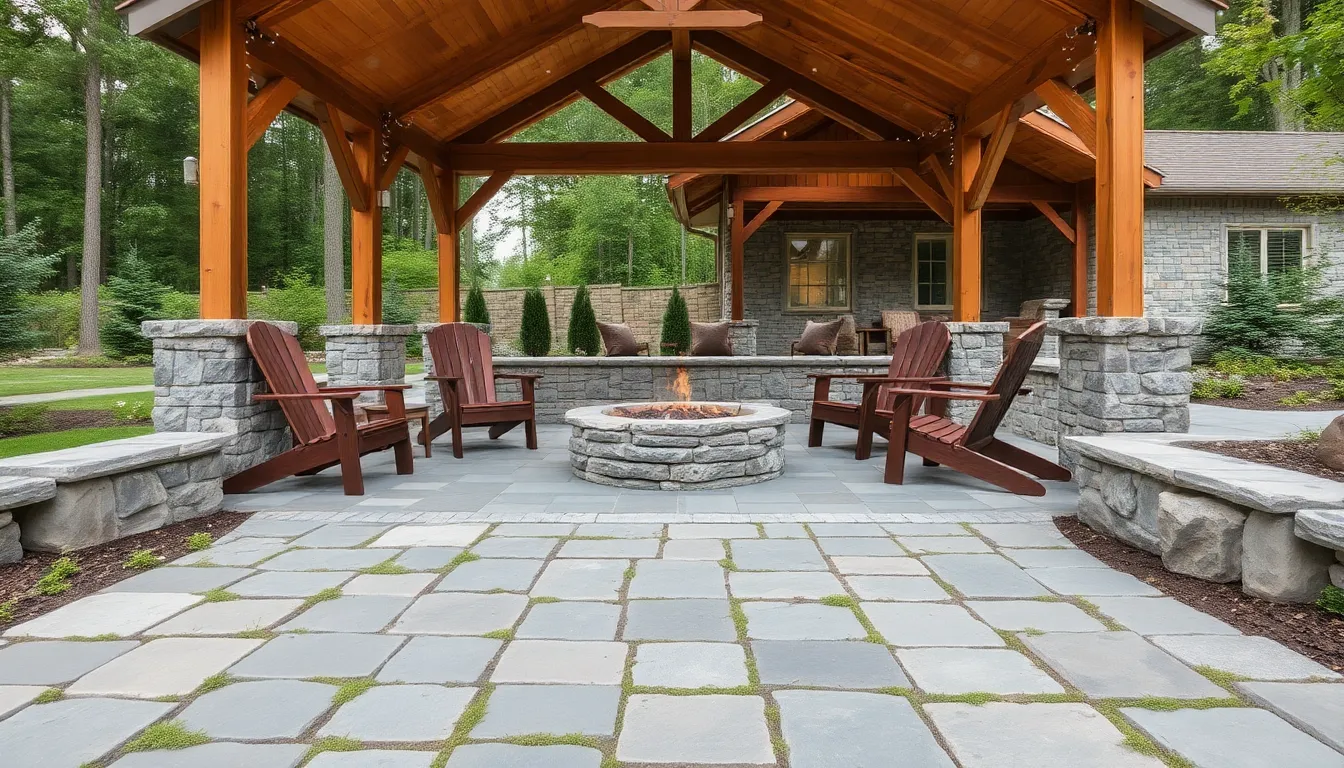Transforming your backyard into a welcoming retreat doesn’t have to be an overwhelming task. Whether you’re just dipping your toes into outdoor design or you’ve been nurturing your space for years, the timeless combination of stone and timber offers endless possibilities for creating stunning outdoor shelters. These materials not only provide durability and elegance but also blend seamlessly with the natural environment, enhancing the beauty and functionality of your outdoor oasis.
In this article, we’ll explore 18 captivating stone and timber shelter combinations that cater to every taste and skill level. You’ll discover practical design tips, inspiring ideas, and useful insights that can help you craft a cozy nook or a grand pavilion. By the end, you’ll have the tools and inspiration needed to elevate your outdoor living space into a haven that reflects your unique style and meets your practical needs.
Introduction to Stone and Timber Shelters
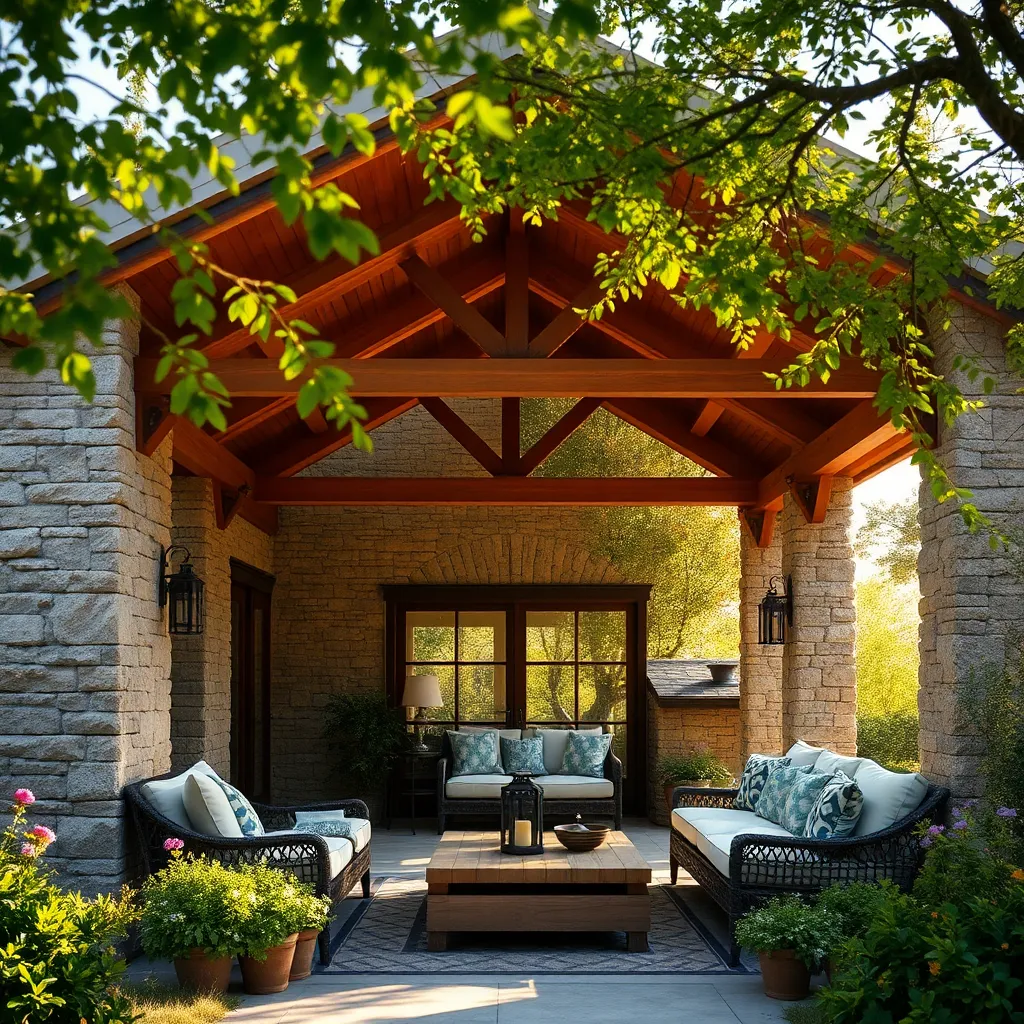
Creating an outdoor shelter using stone and timber combines durability with natural beauty, making it a popular choice for homeowners seeking to enhance their outdoor spaces. For beginners, a simple pergola constructed with treated timber and stone pillars offers a straightforward project. Ensure timber is weather-resistant, such as cedar or redwood, and plan for a stone base that provides stability and complements your garden’s existing design. Consider using local stone for a more sustainable approach, and remember that a basic structure can be expanded later as skills and budget allow.
Adding advanced elements can elevate the appeal and functionality of your stone and timber shelter. Incorporate features like built-in seating or a stone fireplace to create a cozy, inviting space. For those with more experience, consider integrating a retractable roof or weatherproof lighting to extend the shelter’s usability year-round. Pay attention to the dimensions of the shelter, ensuring it provides adequate space for your intended use, whether for intimate gatherings or larger events. Consulting a landscape architect can help optimize the design for style and function, ensuring the shelter becomes a seamless extension of your outdoor environment.
Benefits of Natural Material Combos
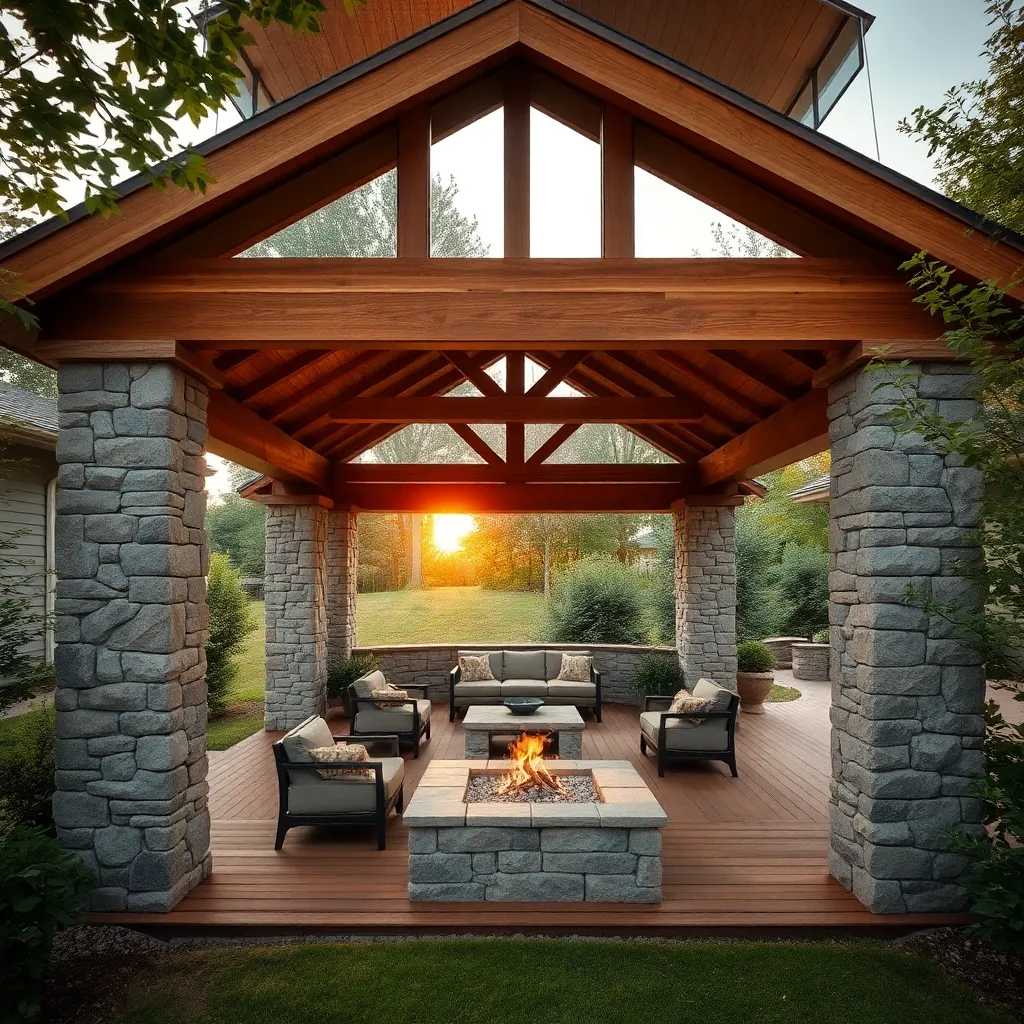
Combining natural materials like stone and timber in your outdoor shelter not only enhances aesthetic appeal but also offers practical benefits. Stone provides durability and low maintenance, making it an excellent choice for structural elements like bases or columns. Meanwhile, timber adds warmth and versatility, allowing for creative roof designs or intricate detailing. For beginners, start by choosing a durable stone such as granite or limestone, paired with treated hardwood, to ensure longevity and weather resistance.
For those looking to elevate their shelter design, consider advanced techniques like integrating reclaimed wood for a rustic touch or opting for a mix of stone textures for added depth. When planning your dimensions, ensure the stone base is at least 12-24 inches wide for stability, while timber beams should be spaced approximately 24-36 inches apart to provide a robust framework. These combinations not only create a visually appealing structure but also maximize the functionality, providing a space that’s both inviting and resilient.
Choosing the Right Stone Type
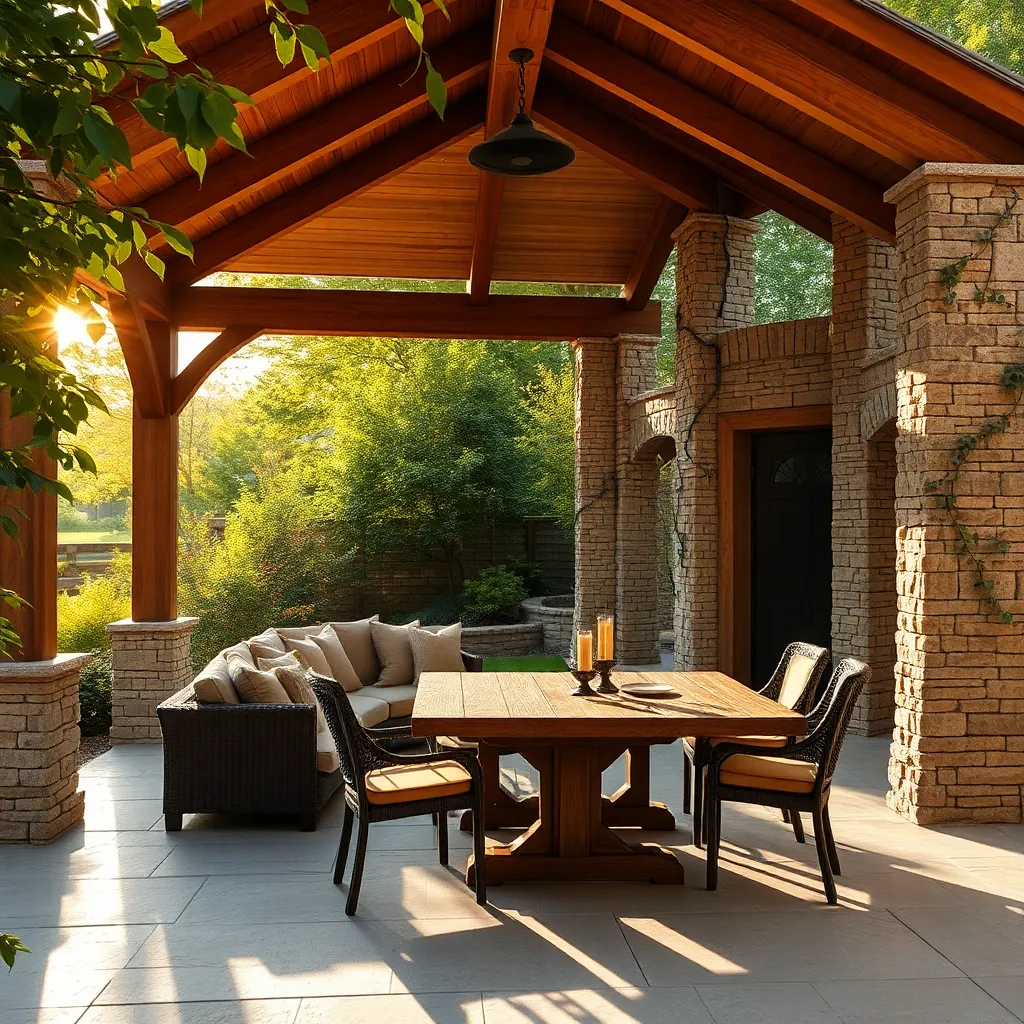
When selecting the right stone type for your outdoor shelter, consider both aesthetics and functionality. Natural stone options like limestone, granite, and sandstone offer durability and weather resistance, making them excellent choices for long-lasting structures. For beginners, limestone is a versatile option due to its ease of cutting and shaping, while more experienced builders might opt for granite for its superior strength and elegant appearance.
Incorporating stone into your design can enhance the shelter’s visual appeal and structural integrity. For a cohesive look, match the stone color and texture with existing landscape features such as pathways or garden walls. Advanced builders can experiment with dry-stone construction techniques to create a rustic charm without using mortar. When planning your project, ensure each stone is at least 2 inches thick for stability and use stones of varying sizes to add dimension and interest.
Selecting Quality Timber for Durability
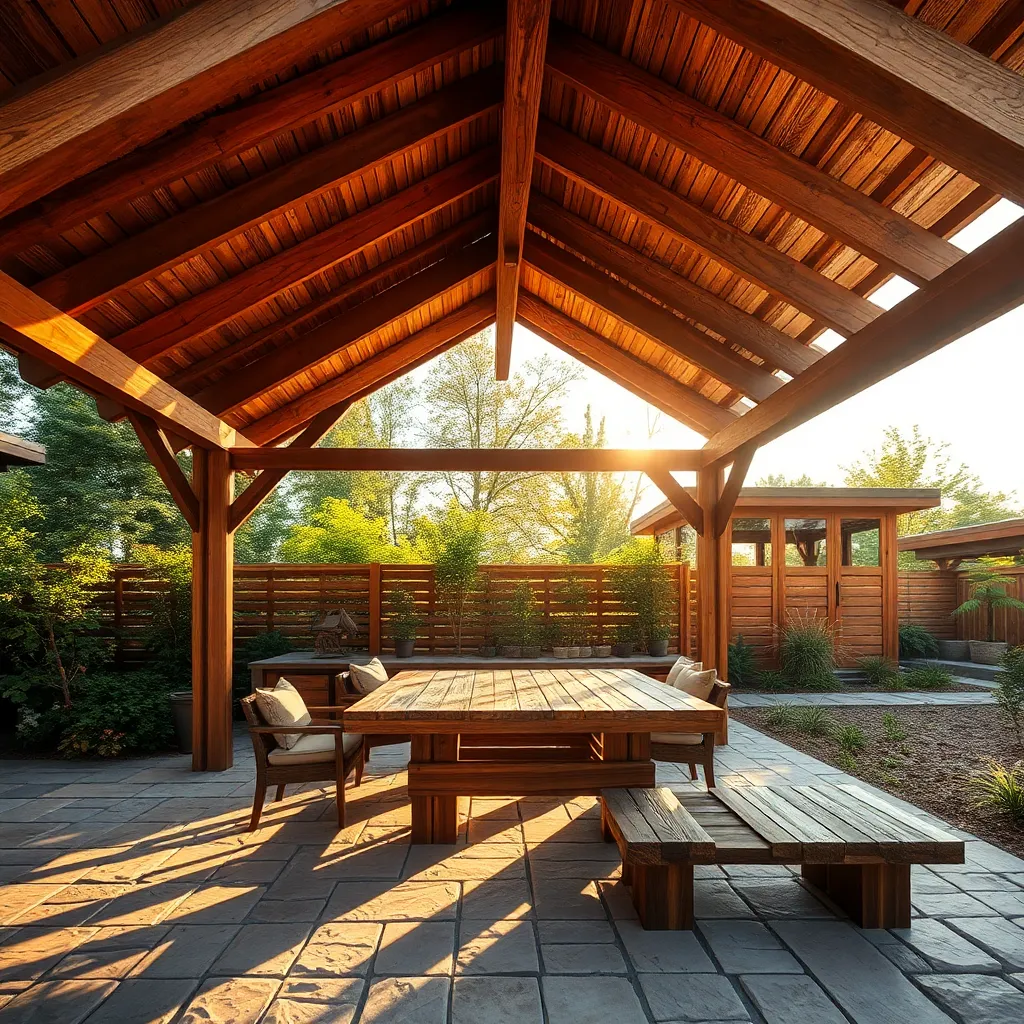
When selecting timber for your outdoor shelter, prioritizing durability is essential to ensure your structure withstands the elements. Opt for naturally resilient woods such as cedar, redwood, or teak, which are renowned for their resistance to decay and insect damage. For beginners, these woods offer a balance of longevity and ease of workability. Advanced gardeners might consider using pressure-treated timber to enhance durability further, especially in high-moisture environments.
Additionally, pay attention to the dimensions and treatment of the timber to maximize its lifespan. Choose thicker beams and posts for structural supports to enhance stability and resistance to warping. Consider adding a protective sealant or stain to shield the wood from UV rays and moisture, which can prolong its life significantly.
- Ensure all cuts and joints are treated to prevent moisture ingress.
- Regular maintenance, like reapplying sealants, can make a significant difference in keeping your shelter sturdy and appealing.
Incorporating these steps will provide a robust and long-lasting outdoor structure that complements your stone elements beautifully.
Designing with Rustic Elegance in Mind
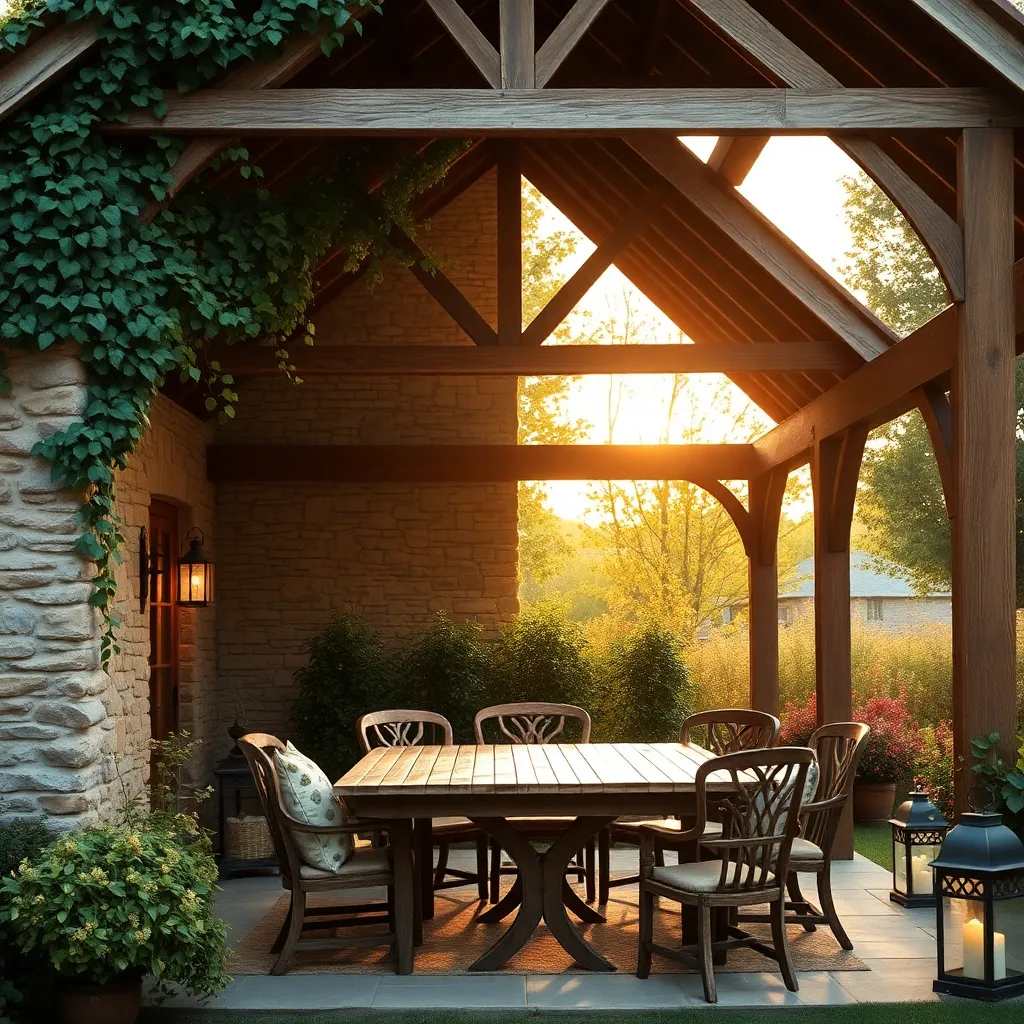
Incorporating rustic elegance into your outdoor shelter design involves balancing natural elements with thoughtful craftsmanship. Start by choosing materials that enhance the natural landscape, such as using locally sourced stones for the foundation or walls, which blend seamlessly with the surroundings. Timber beams, preferably reclaimed or sustainably sourced, can add warmth and authenticity to the structure. For a polished finish, consider keeping the wood untreated to allow it to weather naturally, or apply a light stain that enhances the wood grain while providing protection from the elements.
Keep design elements simple yet impactful by focusing on functionality and comfort.
- Incorporate large, open spaces and airy layouts that invite the outdoors in, utilizing features like high ceilings and wide overhangs to create a welcoming ambiance.
- Use natural fabrics and textures in your furniture and decor to maintain the rustic theme without compromising elegance.
For more advanced projects, incorporate custom stonework or a handcrafted timber frame, which adds a unique, personal touch to your outdoor shelter. Consider integrating features like a stone fireplace or a timber pergola to enhance both the aesthetic and practicality of the space.
Incorporating Modern and Traditional Elements
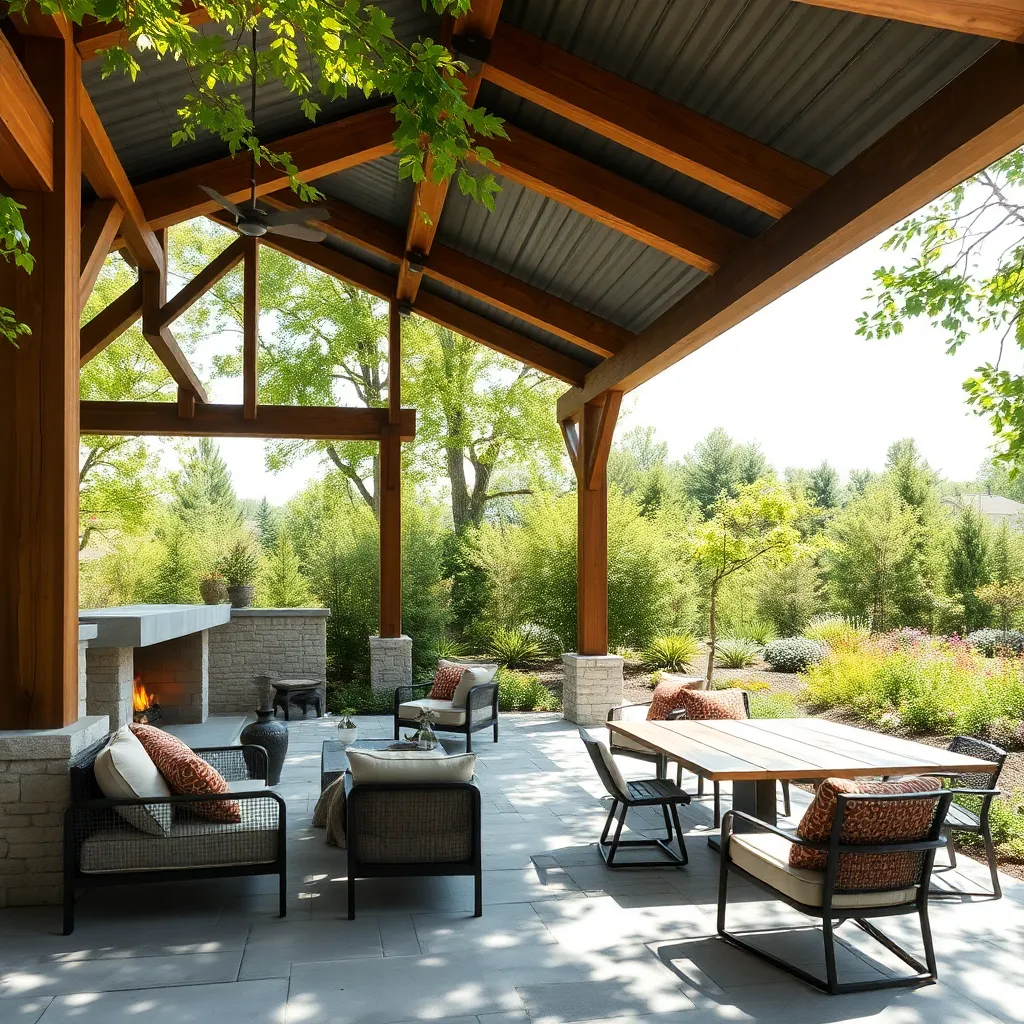
To seamlessly blend modern and traditional elements in your outdoor shelter, consider mixing materials such as stone and timber. Using stone for the base or columns provides a solid, enduring foundation, while timber beams add warmth and a natural feel. Opt for a neutral color palette to maintain harmony between these elements. For beginners, start with straightforward designs like a simple gabled roof, which combines classic and contemporary styles effortlessly.
Advanced enthusiasts can experiment with incorporating sleek metal accents alongside traditional wood features for a striking contrast. For instance, you might use metal brackets or connectors to reinforce timber joints, enhancing both durability and style. When planning the dimensions, ensure that the height of the shelter complements the surrounding landscape, maintaining a balanced proportion. Consider integrating modern lighting, like LED strips, to highlight the structure’s architectural features, creating a cozy ambiance during evening gatherings.
Maximizing Structural Stability and Strength

To ensure the structural stability and strength of your stone and timber outdoor shelter, it’s crucial to start with a solid foundation. Opt for concrete footings that are at least 12 inches deep and 18 inches wide for most residential applications, which will provide a stable base against shifting soils. For the timber framework, select pressure-treated wood or naturally rot-resistant species like cedar or redwood to withstand the elements and prevent decay.
Incorporating cross-bracing in the design will significantly enhance its durability, especially in windy areas. Use galvanized steel brackets and connectors to securely join timber elements, ensuring they can withstand lateral forces. Advanced builders might consider adding a stone veneer to the lower sections of timber posts, combining aesthetic appeal with additional weight anchoring. These techniques not only increase your shelter’s longevity but also create an inviting, robust space for outdoor gatherings.
Crafting Eco-Friendly Outdoor Retreats
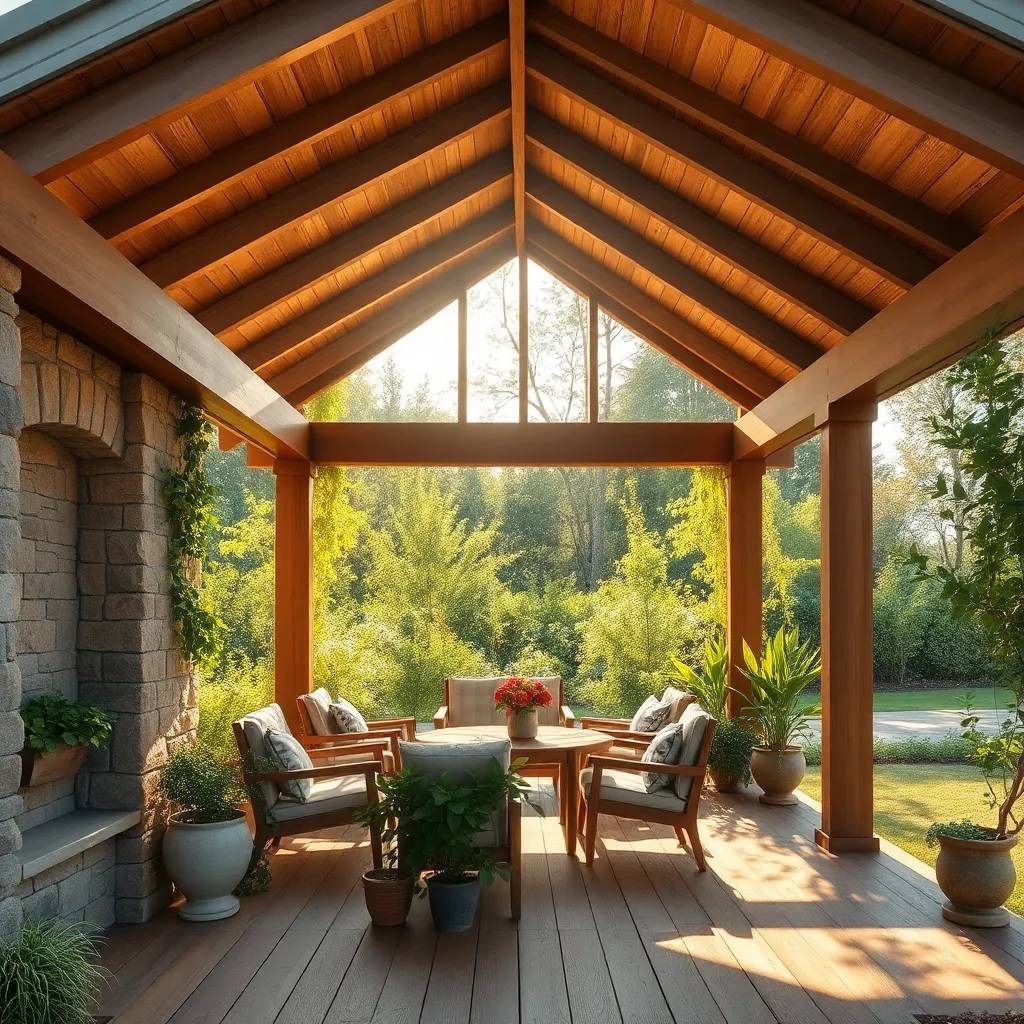
To craft an eco-friendly outdoor retreat, start by selecting sustainable materials like reclaimed timber and locally sourced stone. These materials not only reduce environmental impact but also blend seamlessly with natural surroundings. Consider using a green roof—a layer of vegetation on top of your shelter—to enhance insulation and promote biodiversity. Beginners can start with simple designs, while those with more experience might explore integrating solar panels for energy efficiency.
Incorporating natural light and ventilation is crucial for an eco-conscious design. Position your shelter to maximize sunlight exposure during the day, and install operable windows or vents to improve airflow. Choose non-toxic finishes that are safe for both the environment and your family. For a touch of sophistication, advanced builders might include a rainwater collection system, turning your shelter into a self-sustaining oasis. Whether you’re starting small or thinking big, these strategies help create a sustainable and inviting outdoor haven.
Weatherproofing Your Shelter Design
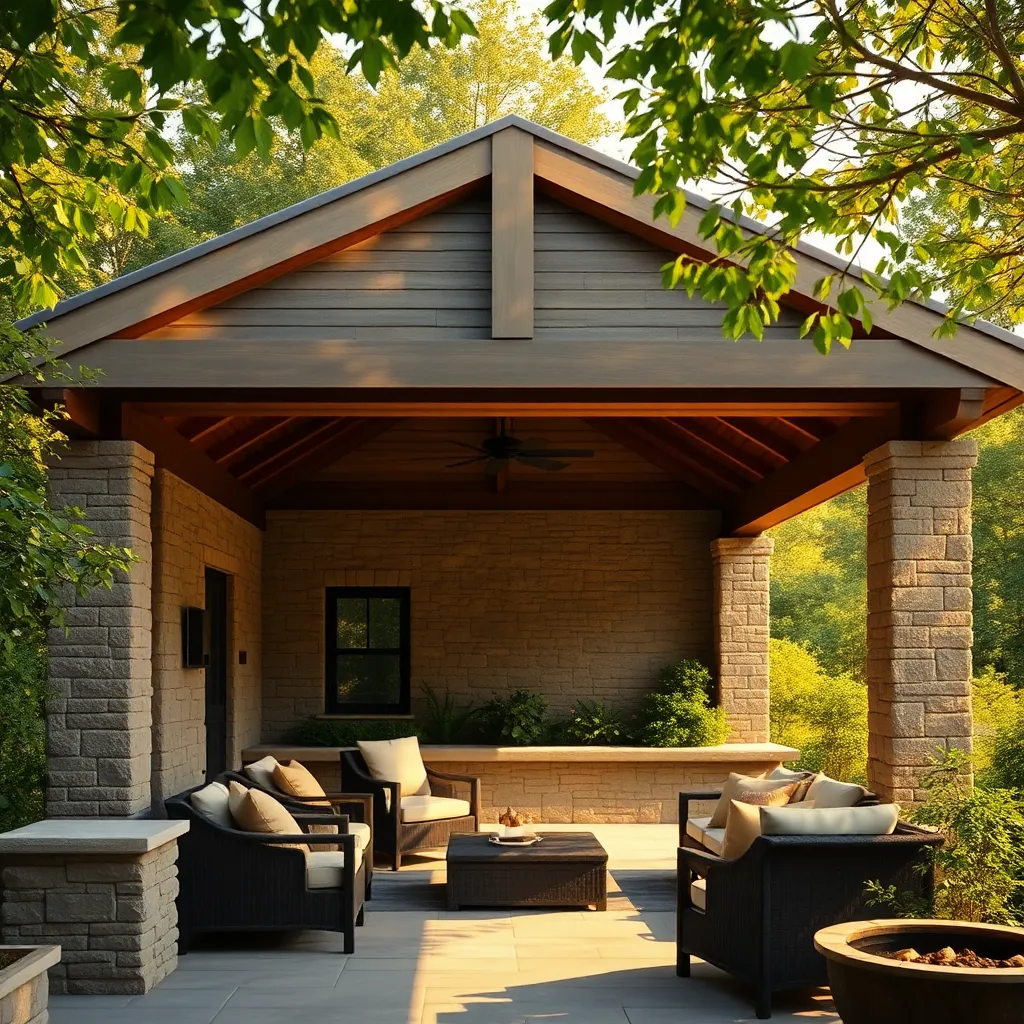
To ensure your stone and timber outdoor shelter withstands the elements, focus on selecting materials that naturally resist weathering. Cedar and redwood are excellent timber choices due to their natural oils that deter rot and pests. For stone elements, opt for durable options like granite or slate, which can handle extreme temperatures and moisture without deteriorating. Seal all surfaces with a high-quality, weather-resistant sealant to prolong their lifespan and maintain their appearance.
Incorporate design elements that enhance the shelter’s resilience against harsh weather. Consider a sloped roof to facilitate water runoff, reducing the risk of leaks and water damage. Integrate rain gutters and downspouts to direct water away from the structure’s foundation. For added protection, use stainless steel or galvanized hardware to prevent rust. These strategies not only preserve the structure but also ensure it remains a comfortable retreat throughout the seasons.
Integrating Stone and Timber for Insulation
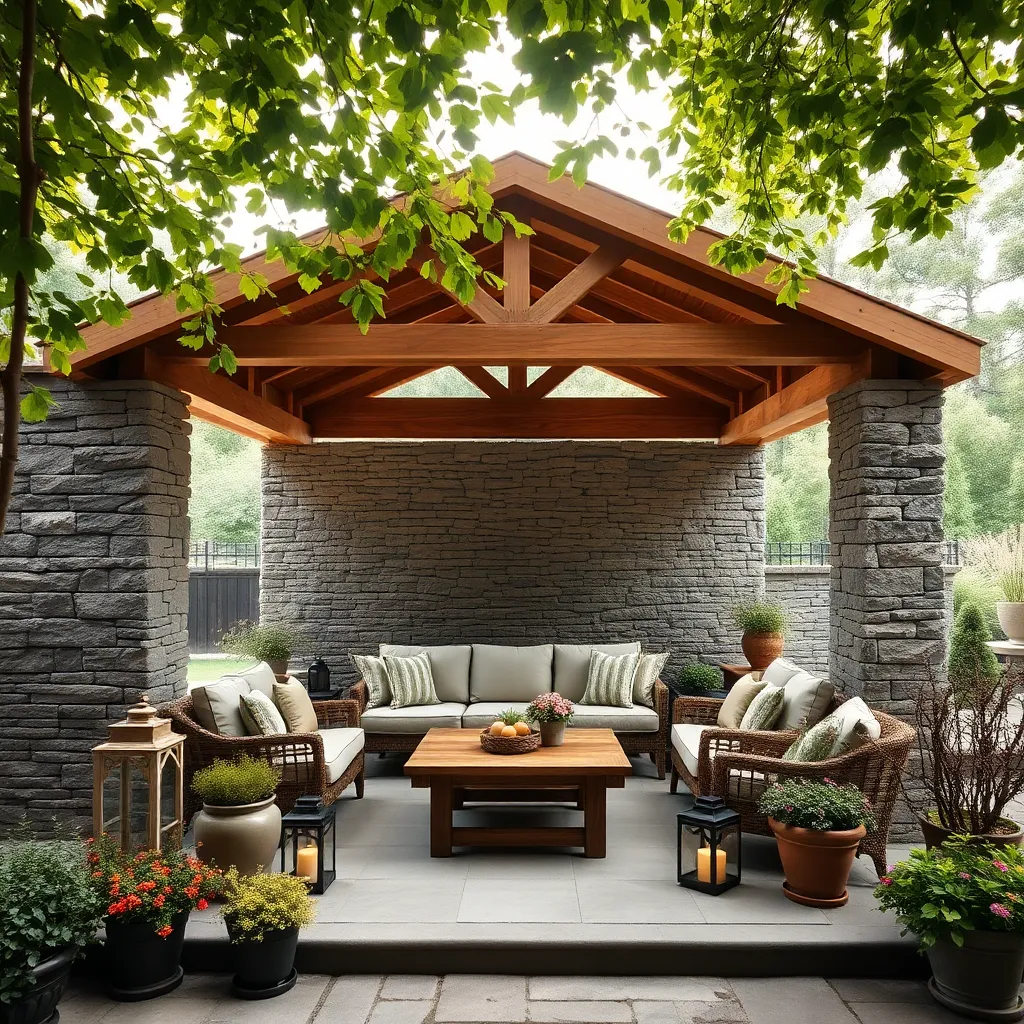
Integrating stone and timber in your outdoor shelter not only enhances its aesthetic appeal but also boosts its insulation properties. Start by selecting dense, durable stones such as granite or basalt, which are excellent for retaining heat. Pair these with timber like cedar or oak, known for their strong insulating capabilities. When constructing walls, aim for a thickness of around 12 inches for stone and at least 6 inches for timber to ensure optimal thermal performance. This combination helps maintain a comfortable temperature inside, no matter the season.
For those seeking advanced techniques, consider creating a layered wall system where stone is used on the exterior and timber on the interior. This method provides additional insulation and a rustic charm.
- Ensure all joints between stone and timber are tightly sealed to prevent air leaks.
- Use natural sealants to maintain the integrity of the materials.
The synergy of these materials offers both strength and beauty, making your shelter a cozy retreat year-round.
Customizing Shelters for Various Landscapes

Incorporating stone and timber into your outdoor shelter can be tailored to fit various landscapes by considering the terrain and climate. For hilly or uneven landscapes, focus on creating a level base using stone retaining walls, which not only provide stability but also enhance the aesthetic appeal. In areas prone to wind or heavy rainfall, opt for heavier, denser timber like oak or cedar, which offers greater resilience against the elements. Ensure that the timber is treated for weather resistance to extend the lifespan of your structure.
Understanding your landscape’s unique features allows you to make the most of your shelter design. On flat, expansive gardens, use stone pathways to guide the eye towards the shelter, creating a welcoming entrance. Elevate your shelter slightly on platforms to prevent water pooling during rainy seasons, using materials like gravel or pavers for drainage. For those seeking a more advanced project, integrate solar panels into the timber roof design to capitalize on sunny landscapes, providing both shade and sustainable energy. This blend of practicality and creativity ensures your outdoor shelter is both functional and beautiful.
Enhancing Curb Appeal with Natural Materials
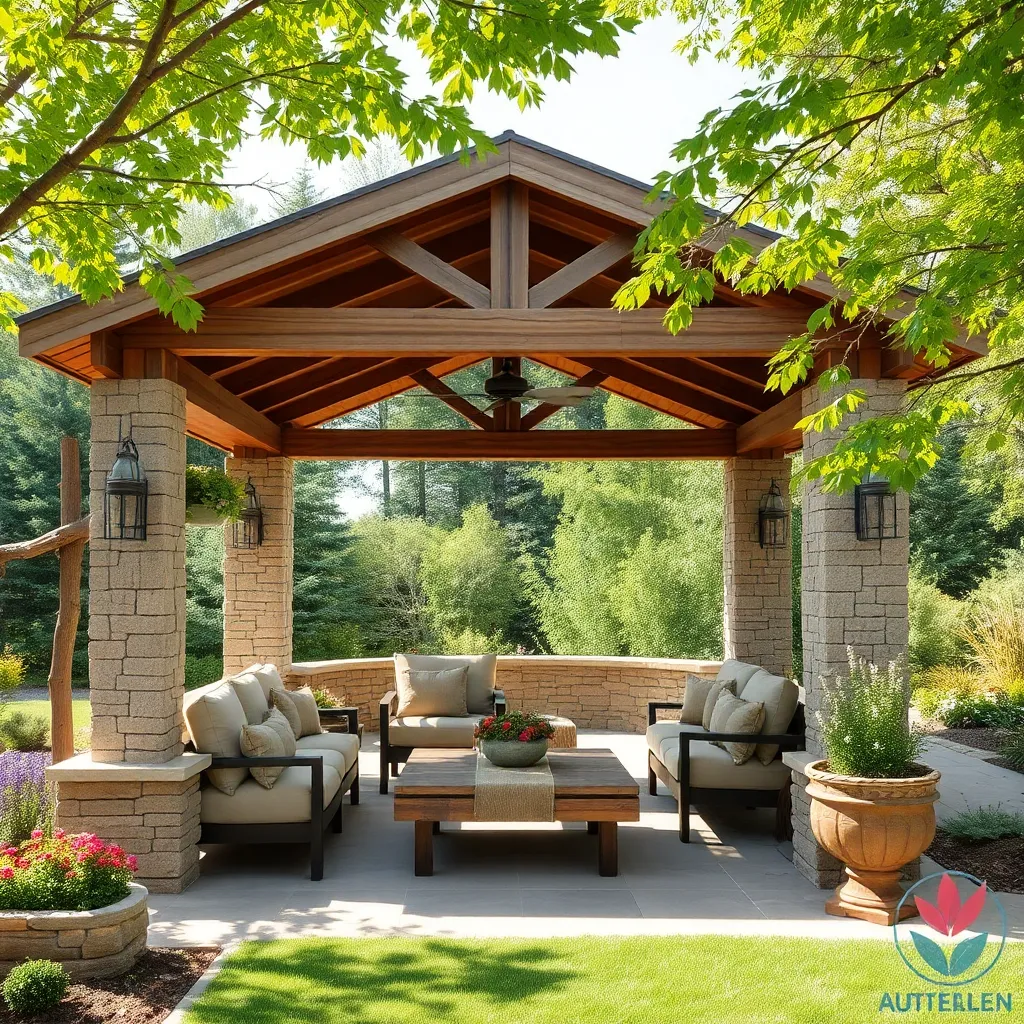
To enhance curb appeal using natural materials, consider integrating **stone and timber** in your outdoor shelter designs. These materials not only provide durability but also blend seamlessly with most landscapes. Start with a **stone base**, which offers a solid foundation and a timeless look. Opt for **locally sourced stones** to ensure regional compatibility and to reduce costs. For the timber elements, consider using **weather-resistant woods** like cedar or redwood, which are both beautiful and functional. Combining these materials can create a rustic yet elegant shelter that enhances the overall aesthetic of your property.
Incorporating **design elements** such as **natural stone pillars** paired with **timber beams** can elevate the visual appeal of your shelter. For beginners, using **pre-cut timber beams** can simplify the construction process, while more experienced DIYers might explore custom cuts for a unique design. To add a finishing touch, integrate **soft lighting** like LED strips or lanterns to highlight the natural beauty of the stone and wood at night. These **simple yet effective enhancements** can transform your shelter into a standout feature, increasing both curb appeal and your home’s value.
Lighting Solutions for Stone and Timber Areas
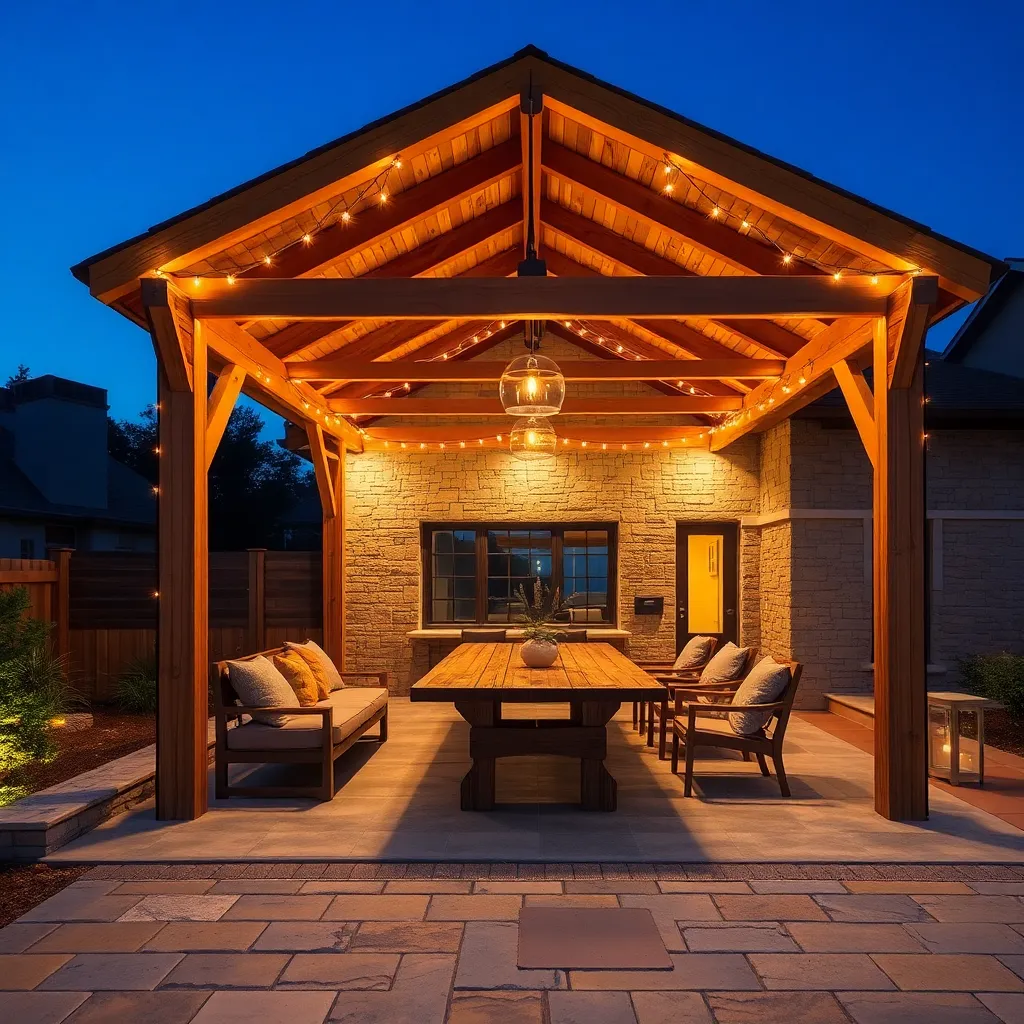
Transforming your stone and timber outdoor areas with the right lighting can enhance their natural beauty while offering functional benefits. Begin by choosing weather-resistant fixtures like stainless steel or brass, which blend seamlessly with rustic materials. For a basic setup, use simple solar-powered path lights along stone walkways to improve visibility and safety. Consider installing LED strip lights under timber beams for an ambient glow that highlights architectural features.
For more advanced illumination, incorporate a mix of uplighting and downlighting to create depth and drama. Uplights can accentuate stone walls, while downlights mounted on timber structures provide gentle overhead lighting.
- For stone areas, select fixtures with a warm color temperature (around 2700K) to complement the earthy tones.
- In timber zones, use dimmable options to adjust the mood as needed.
Integrate smart lighting controls for convenience and energy efficiency, allowing you to set schedules and adjust brightness with ease.
Furnishing Tips for Stone Timber Combos
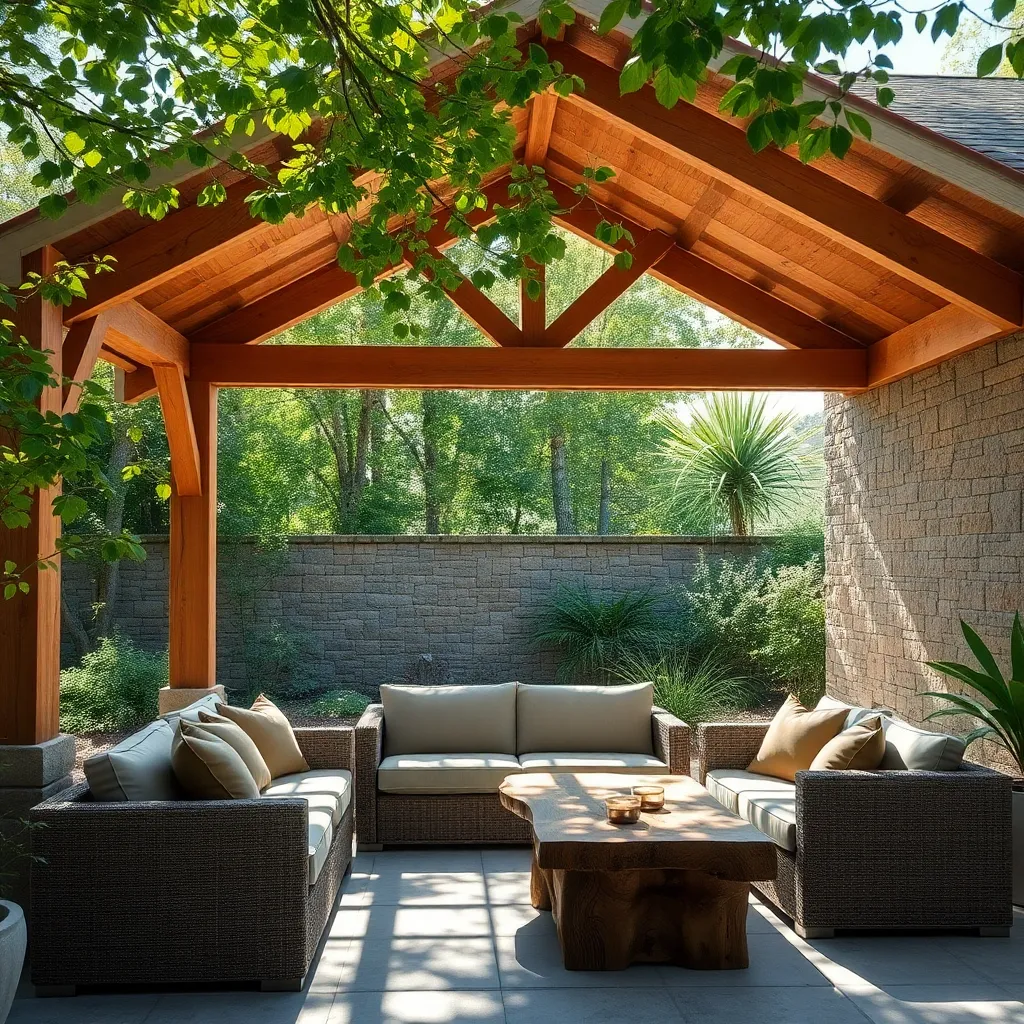
To effectively furnish a stone and timber outdoor shelter, consider integrating **durable, weather-resistant materials** that complement the natural aesthetic. Opt for outdoor furniture made from teak, cedar, or eucalyptus, as these woods naturally resist decay and insects. For a harmonious design, select cushions and pillows in earth tones or muted colors that mirror the stone and timber hues. This creates a cohesive look that blends seamlessly with the surrounding environment.
Emphasize comfort and functionality by incorporating **multi-purpose furniture** that offers flexibility for different occasions. For instance, a stone-topped table can serve simultaneously as a dining area and a workspace. Add layered lighting with lanterns or string lights to enhance the ambiance during evening gatherings. For those seeking an advanced touch, consider installing built-in stone benches with storage underneath to maximize space efficiency while maintaining the rustic charm of your shelter.
Maintaining Your Stone and Timber Structures

Maintaining stone and timber structures requires a keen focus on both material preservation and structural integrity. Begin by regularly sealing the stone elements with a high-quality, breathable sealant to prevent moisture penetration and freeze-thaw damage. For timber, apply a protective stain or sealant every 1-3 years to safeguard against UV rays and moisture. Ensure drainage pathways are clear to prevent water pooling, which can compromise both stone and timber.
Advanced care involves inspecting joints and connectors for signs of wear or loosening, as these are crucial in maintaining the stability of your shelter. Use galvanized or stainless steel fasteners to prevent rust and ensure longevity, especially in areas with high humidity. Consider using composite timber for longevity in high-exposure areas, as it offers durability with minimal maintenance. Regular checks and timely repairs will keep your outdoor shelter both beautiful and functional for years to come.
Seasonal Décor Ideas for Outdoor Spaces
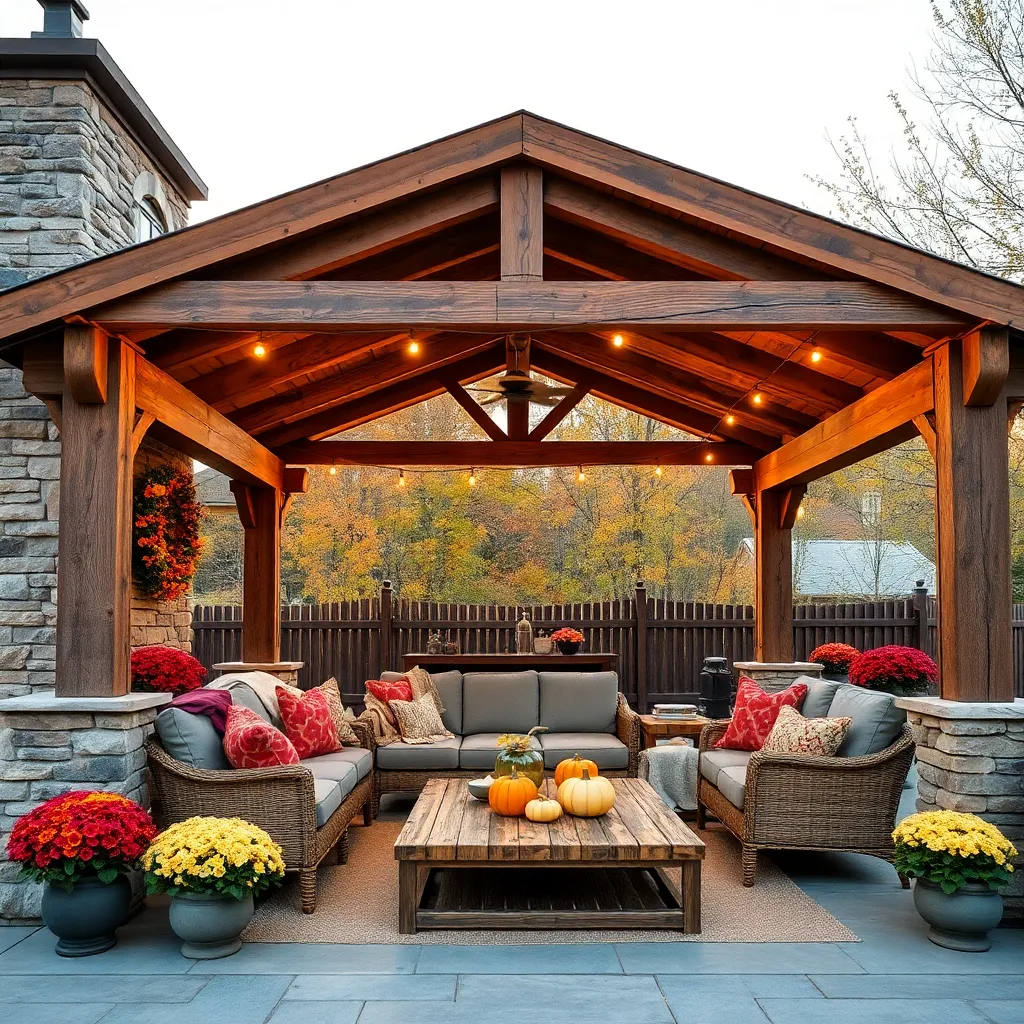
Enhance your stone and timber outdoor shelters with seasonal décor that brings warmth and charm year-round. **In spring,** use vibrant potted plants such as tulips and daffodils to line pathways or entrances, bringing a splash of color against natural textures. **During summer,** consider stringing fairy lights across beams or from tree to post, creating a magical evening setting. **For autumn,** incorporate gourds and pumpkins in various sizes around seating areas to capture the season’s essence. **Winter welcomes** evergreens and rustic wooden lanterns, providing a cozy, inviting atmosphere for any festive gatherings.
To elevate your décor, consider incorporating **multi-functional design elements** that blend seamlessly with the natural stone and timber structures. **For beginners,** start with simple additions like weather-resistant cushions in seasonal colors or a sturdy outdoor rug to define the space. **Advanced decorators** might explore building a decorative stone fireplace or using timber to create custom shelving for displaying seasonal items. **Ensure materials** like treated wood and weatherproof fabric are used to withstand the elements, maintaining the beauty and functionality of your outdoor space through every season.
Case Studies: Successful Shelter Projects
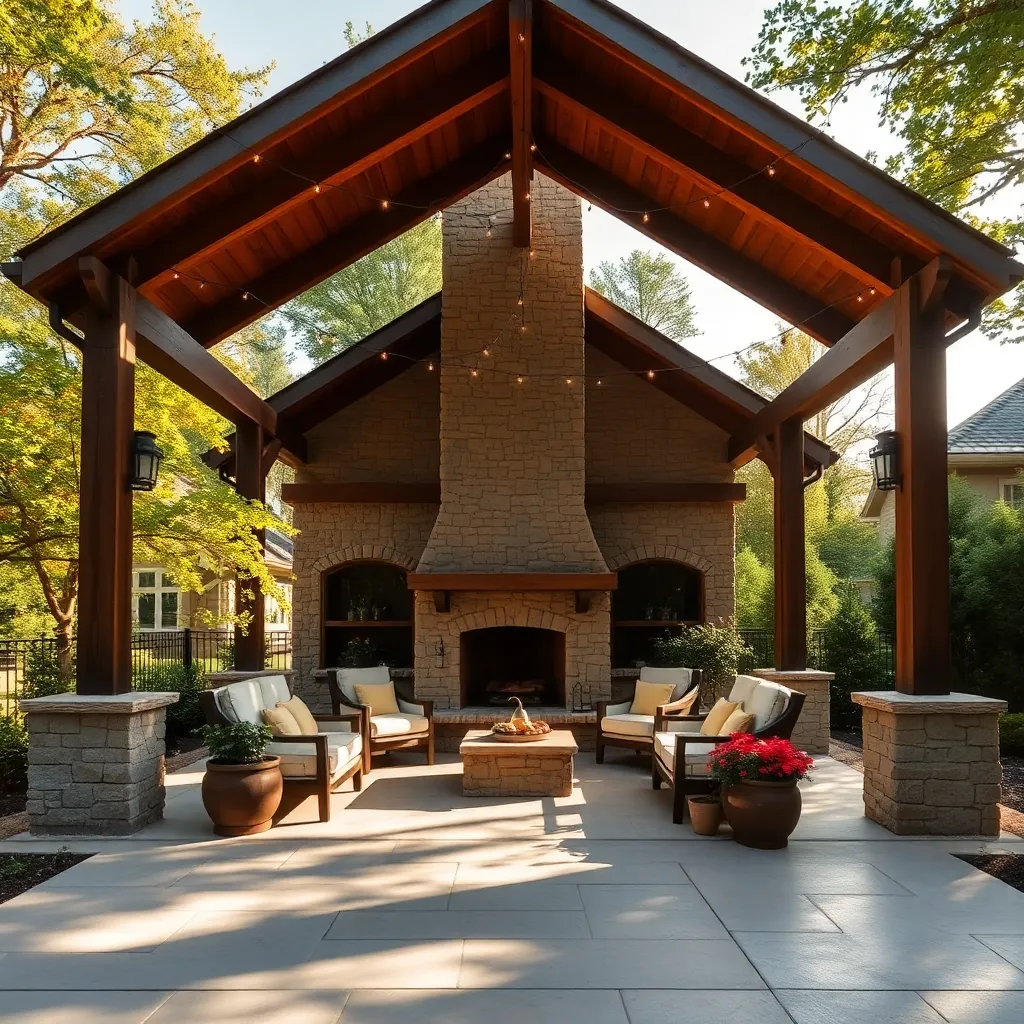
One successful case study of a stone and timber outdoor shelter involved the use of **locally sourced materials** to blend seamlessly with the surrounding environment. For homeowners looking to replicate this, consider using **reclaimed timber** for a rustic aesthetic and **natural stone** for durability. Beginners can start by focusing on a simple rectangular layout, ensuring a stable foundation using crushed stone and concrete footings. Meanwhile, more advanced builders might explore custom-cut stone pillars for added architectural interest.
Another inspiring project showcased an **innovative roofing design** that combines the natural beauty of cedar shingles with the durability of a steel underlayer. This approach not only provides excellent weather resistance but also enhances the shelter’s visual appeal. For those eager to try this, be sure to account for **proper drainage** by incorporating a slight pitch in the roof design. Additionally, using **weather-resistant sealants** on wood components can greatly extend the life of your outdoor shelter. With attention to these details, homeowners can create a cozy retreat that stands strong through the seasons.
Conclusion: Harmonizing Nature and Comfort
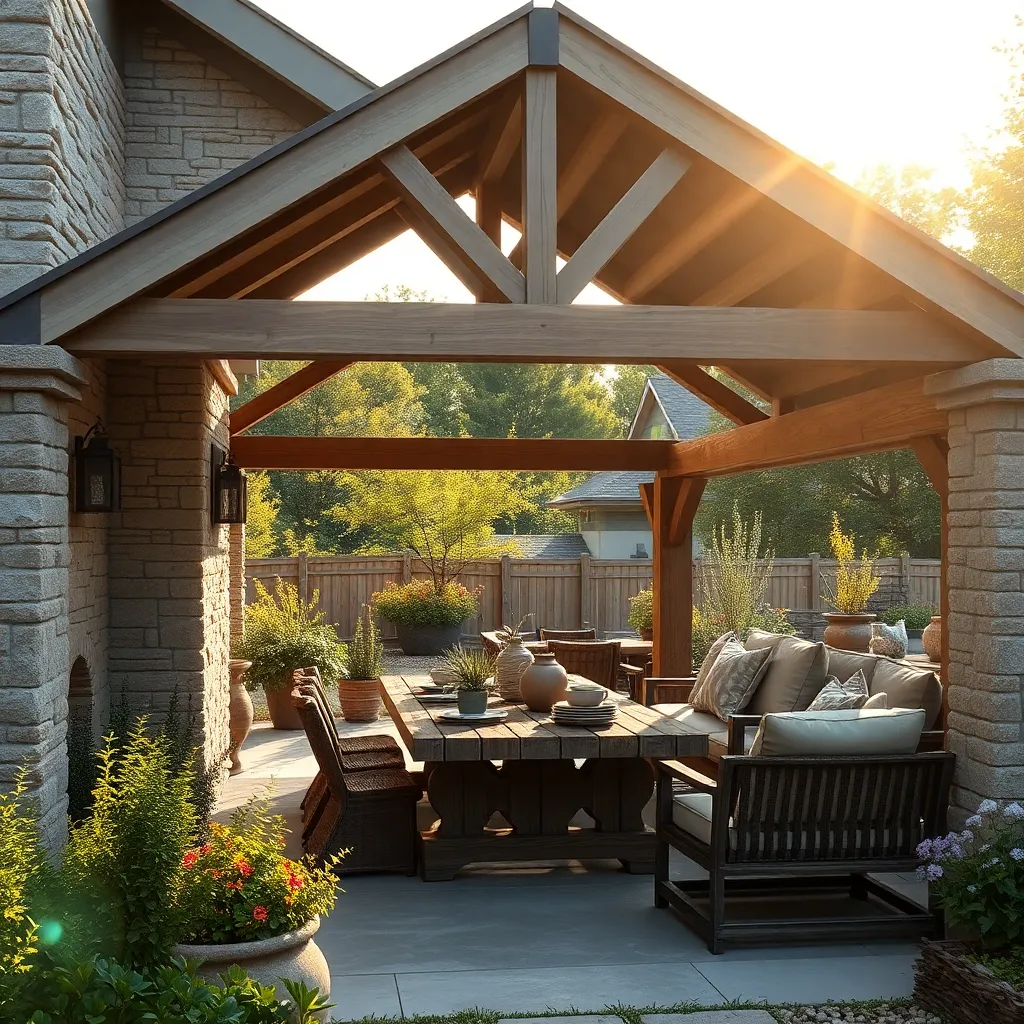
Bringing stone and timber together in outdoor shelter design offers a harmonious blend of nature and comfort. To achieve this balance, consider using **locally sourced materials** that not only reduce your carbon footprint but also ensure your shelter integrates seamlessly with the surrounding landscape. For beginners, starting with a simple pergola using treated timber and natural stone paving can provide a durable and aesthetically pleasing retreat. Ensure that the timber is properly sealed to withstand the elements, and opt for **non-slip stone surfaces** to enhance safety and longevity.
For those seeking to elevate their outdoor space, incorporating **advanced design elements** like a stone fireplace or timber-framed roof can add both functionality and charm. A **sloped timber roof** offers protection from the elements, while a stone fireplace provides warmth and a focal point for gatherings. Consider using a mix of **different stone textures**—smooth flagstone for flooring and rugged fieldstone for walls—to create visual interest and depth. By blending these materials thoughtfully, you can craft a shelter that not only complements your home but also invites relaxation and enjoyment of the outdoors.
Conclusion: Creating Beautiful Outdoor Spaces
As we explore the ’18 Stone and Timber Outdoor Shelter Combos,’ we’ve unearthed vital relationship concepts: communication, trust, compromise, shared goals, emotional support, patience, quality time, respect, individual growth, conflict resolution, adaptability, appreciation, understanding, humor, empathy, intimacy, partnership, and commitment. Each element forms the foundation and shelter that protects and nurtures your relationship, much like stone and timber structures withstand the elements.
To put these insights into action, start by choosing one concept to focus on this week. Perhaps you can initiate a deeper conversation about your shared goals or dedicate time to appreciate your partner’s efforts. Small, consistent actions lead to significant improvements.
We encourage you to bookmark or save this article as a valuable resource. Keeping it handy ensures that you can revisit these concepts whenever you need a reminder or a little guidance.
Remember, the journey to a successful relationship is ongoing. By building on these strong foundations, you are setting the stage for lasting happiness and connection. Embrace this opportunity to fortify your relationship, knowing that the best is yet to come.

